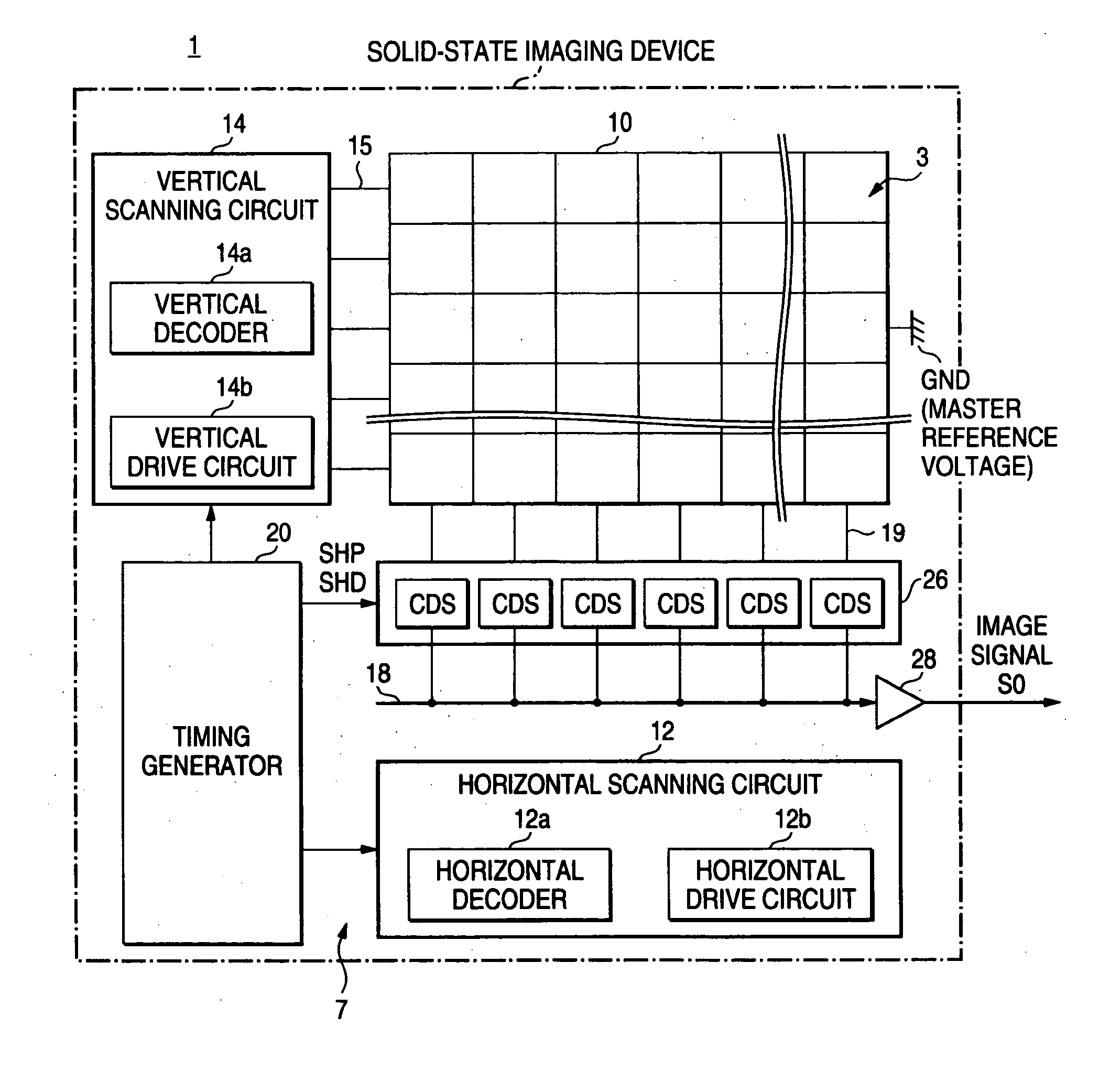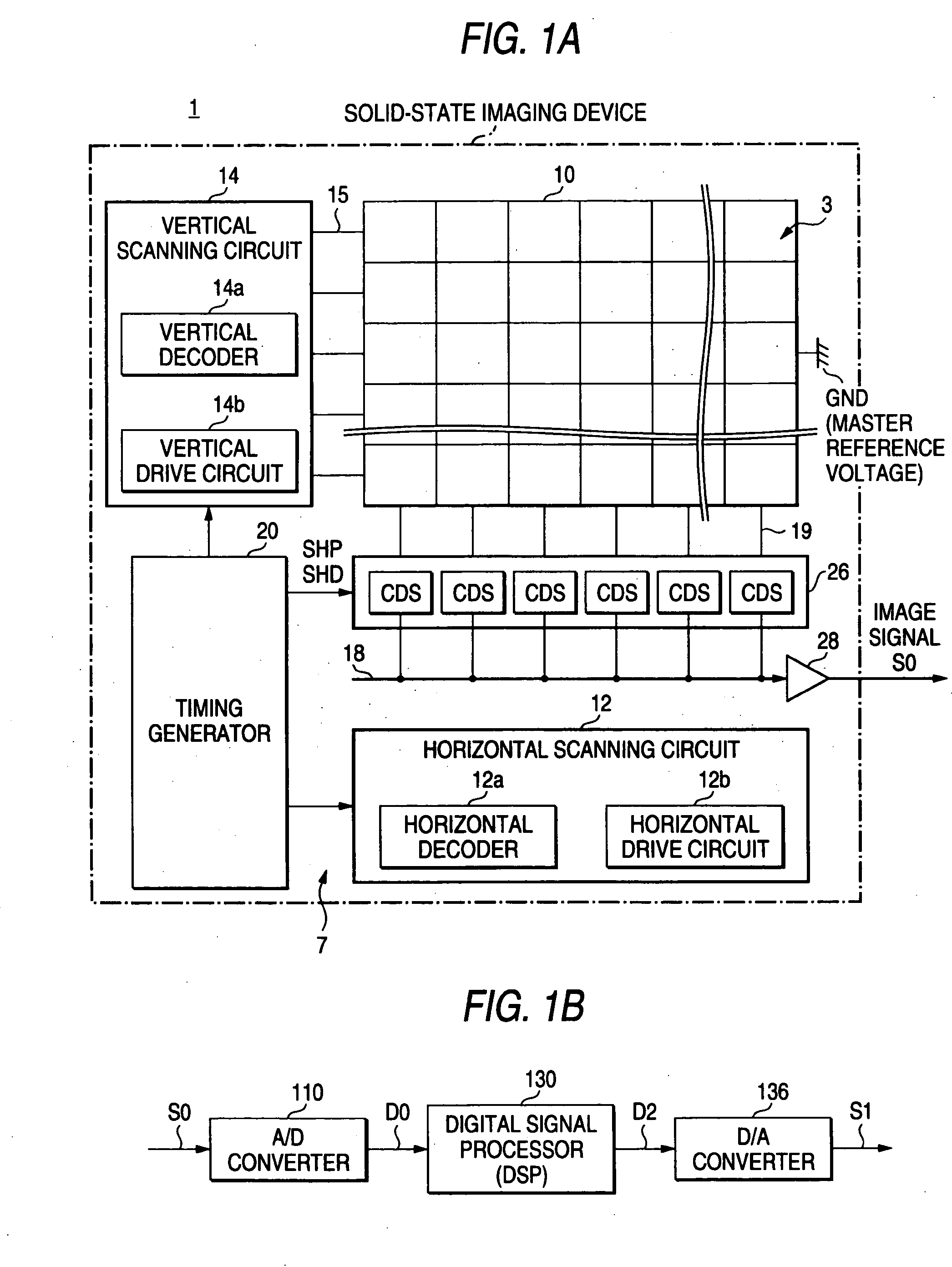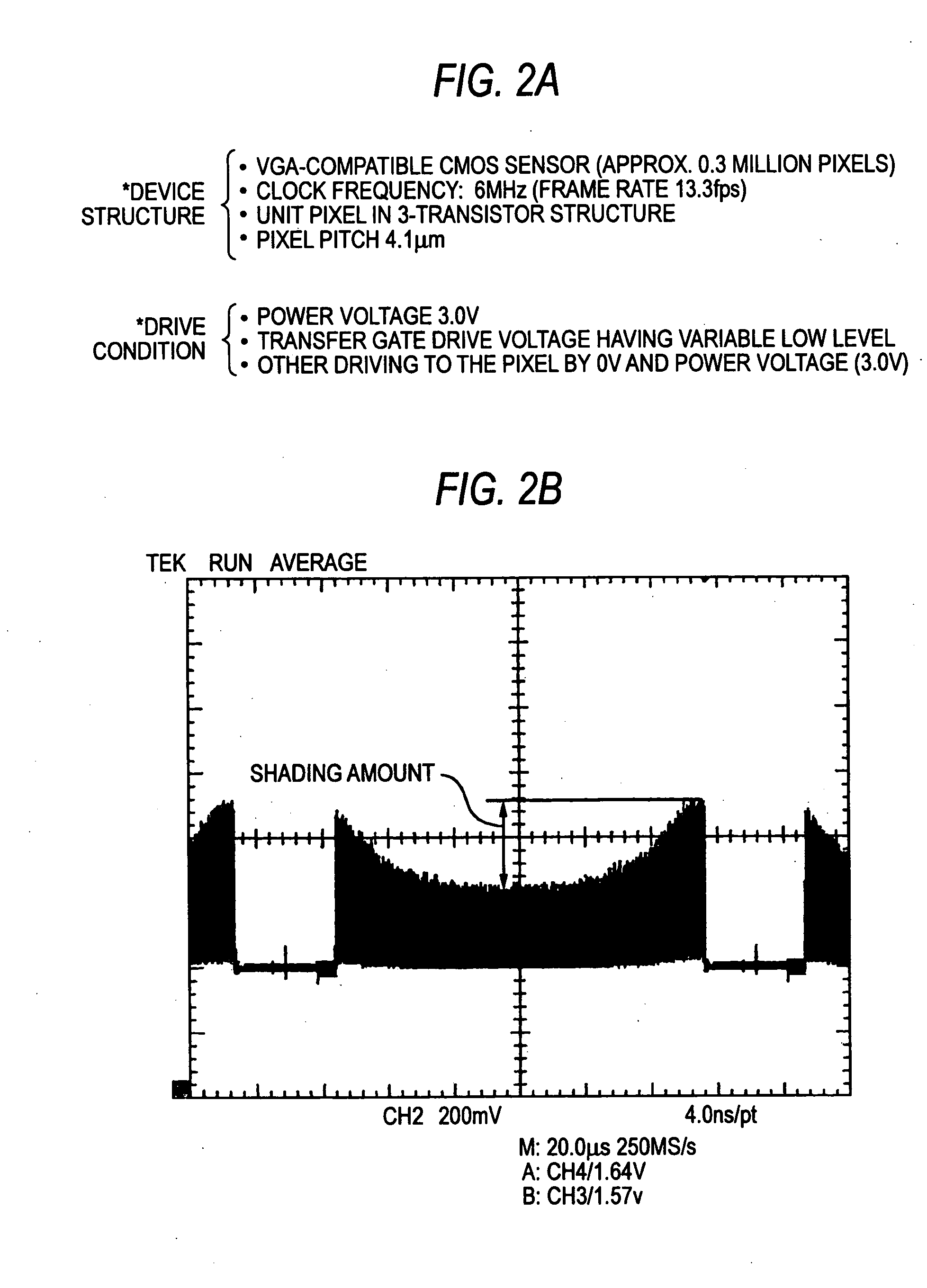Solid-state imaging device and drive control method for the same
a technology of solid-state imaging and drive control, which is applied in the direction of radioation control devices, instruments, television systems, etc., to achieve the effects of reducing saturation shading, increasing the transition time, and reducing saturation shading
- Summary
- Abstract
- Description
- Claims
- Application Information
AI Technical Summary
Benefits of technology
Problems solved by technology
Method used
Image
Examples
Embodiment Construction
[0067] Now embodiments of the present invention will be explained in detail with reference to the drawings. Note that the below exemplifies the application to a CMOS imaging device, an example of an X-Y addressing solid-state imaging device. Meanwhile, the CMOS imaging device is explained on the assumption that all the pixels are configured by the NMOS.
[0068]
[0069]FIG. 1 is a schematic arrangement diagram of a CMOS solid-state imaging device according to an embodiment of the present invention. The solid-state imaging device 1 is applicable as an electronic still camera capable of imaging for color pictures. For example, in a still-picture imaging mode, setting is made to a mode for reading all the pixels.
[0070] The solid-state imaging device 1 has an imaging section arranged, on rows and columns, with pixels (i.e. in two-dimensional matrix form) including light-receiving elements to output a signal commensurate with the amount of incident light, providing an signal output, or volt...
PUM
 Login to View More
Login to View More Abstract
Description
Claims
Application Information
 Login to View More
Login to View More - R&D
- Intellectual Property
- Life Sciences
- Materials
- Tech Scout
- Unparalleled Data Quality
- Higher Quality Content
- 60% Fewer Hallucinations
Browse by: Latest US Patents, China's latest patents, Technical Efficacy Thesaurus, Application Domain, Technology Topic, Popular Technical Reports.
© 2025 PatSnap. All rights reserved.Legal|Privacy policy|Modern Slavery Act Transparency Statement|Sitemap|About US| Contact US: help@patsnap.com



